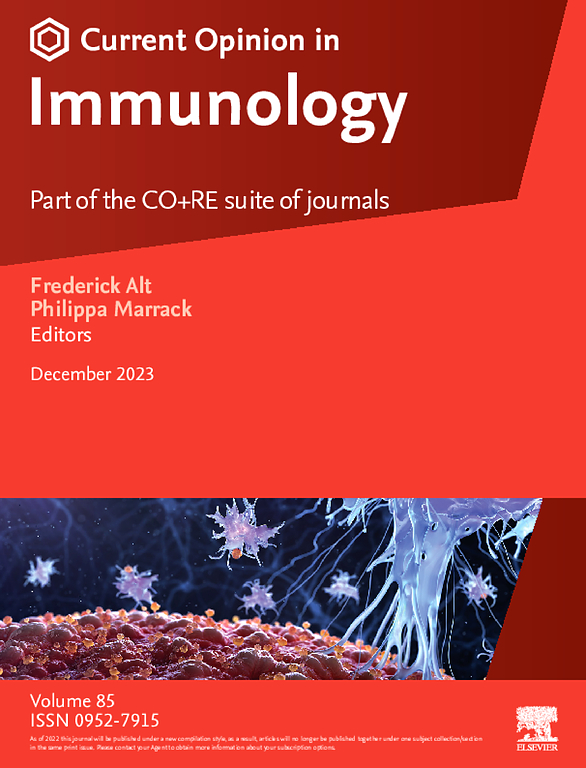Lymphatic messengers: Non-antigen soluble mediators from diseased tissues to draining lymph nodes
IF 6.6
2区 医学
Q1 IMMUNOLOGY
引用次数: 0
Abstract
Tissues deliver not only antigens and cells via afferent lymphatics to draining lymph nodes during immune responses but also deliver soluble molecules that reflect the state of the tissue. In autoimmune diseases, these signals from affected tissues can potentially impact the magnitude or other characteristics of autoimmune responses generated in lymph nodes. Here, we highlight recent studies illustrating the nature of these soluble signals relevant to lupus skin and in lymphatic fluid draining the gut in inflammatory bowel disease. We also highlight the role of lymph node stromal cells as recipients of lymph borne signals. Identifying the molecules delivered from the tissues and how exactly they modulate immune function in draining lymph nodes will help us to better understand aberrant immunity in disease.
淋巴信使:从病变组织到引流淋巴结的非抗原可溶性介质
在免疫应答过程中,组织不仅通过传入淋巴管将抗原和细胞输送到引流淋巴结,而且还输送反映组织状态的可溶性分子。在自身免疫性疾病中,这些来自受影响组织的信号可能会影响淋巴结中产生的自身免疫性反应的大小或其他特征。在这里,我们强调了最近的研究,说明了这些可溶性信号的性质与狼疮皮肤和炎症性肠病中排入肠道的淋巴液有关。我们还强调了淋巴结基质细胞作为淋巴传递信号接受者的作用。识别从组织中传递的分子,以及它们如何准确地调节引流淋巴结的免疫功能,将有助于我们更好地了解疾病中的异常免疫。
本文章由计算机程序翻译,如有差异,请以英文原文为准。
求助全文
约1分钟内获得全文
求助全文
来源期刊
CiteScore
13.30
自引率
1.40%
发文量
94
审稿时长
67 days
期刊介绍:
Current Opinion in Immunology aims to stimulate scientifically grounded, interdisciplinary, multi-scale debate and exchange of ideas. It contains polished, concise and timely reviews and opinions, with particular emphasis on those articles published in the past two years. In addition to describing recent trends, the authors are encouraged to give their subjective opinion of the topics discussed.
In Current Opinion in Immunology we help the reader by providing in a systematic manner: 1. The views of experts on current advances in their field in a clear and readable form. 2. Evaluations of the most interesting papers, annotated by experts, from the great wealth of original publications.
Current Opinion in Immunology will serve as an invaluable source of information for researchers, lecturers, teachers, professionals, policy makers and students.
Current Opinion in Immunology builds on Elsevier''s reputation for excellence in scientific publishing and long-standing commitment to communicating reproducible biomedical research targeted at improving human health. It is a companion to the new Gold Open Access journal Current Research in Immunology and is part of the Current Opinion and Research(CO+RE) suite of journals. All CO+RE journals leverage the Current Opinion legacy-of editorial excellence, high-impact, and global reach-to ensure they are a widely read resource that is integral to scientists'' workflow.

 求助内容:
求助内容: 应助结果提醒方式:
应助结果提醒方式:


